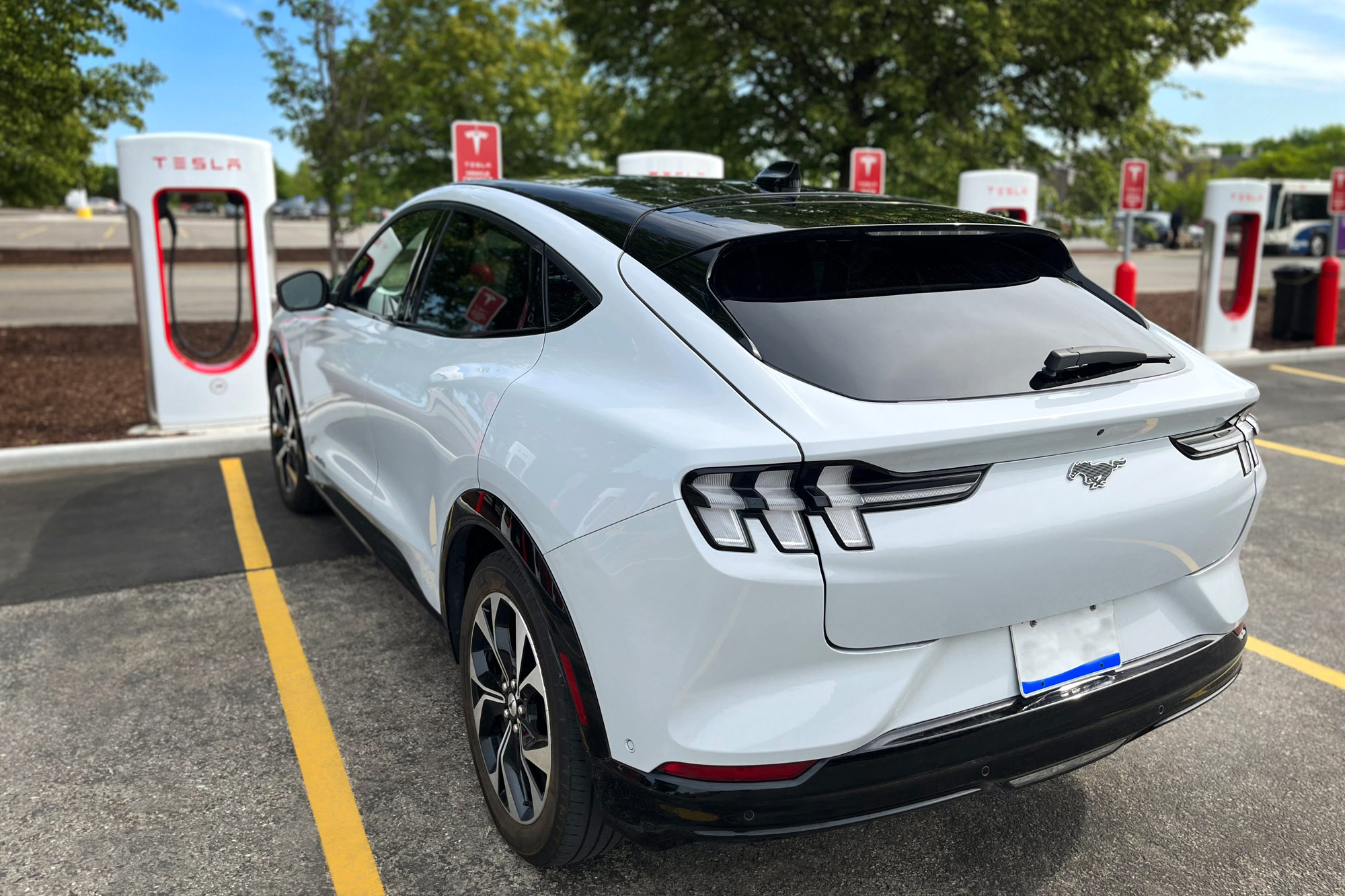How the North American Charging Standard Came to Be
From Fords to Toyotas, many future EVs will use Tesla's once-exclusive port and plug.
 Ford
Ford
QuickTakes:
The North American Charging Standard, or NACS, is the name Tesla chose for its charging system late last year when it announced plans to offer other brands access to its proprietary technology and extensive Supercharger network. Since then, other electric vehicle manufacturers are coming around to the idea of standardizing charging ports and plugs.
Tesla Invents Its Own Plug
In the early 2010s, there wasn't a singular charging standard in the United States, so Tesla sought to create its own along with an extensive network of stations that supported it. When the Model S sedan made its debut in 2012 then, it featured a simple three-pin port that accepted a small, lightweight plug called the Tesla Charging Connector, or TCC. Every Tesla to come on the market since has employed it, with the TCC handling AC Level 1 and 2 charging as well as all the DC Level 3 fast-charging provided by the automaker's Superchargers.
For years, other automakers have had to rely on different plugs and ports for their EVs. The Combined Charging System, or CCS, has a seven-pin plug that provides AC and DC charging with the top five pins dedicated to AC charging and the bottom two enabling DC charging. This is the type of plug that ChargePoint and Electrify America public fast-charging stations use and that nearly every new EV accepts. Newer Teslas can even charge on it, provided the owner attaches a CCS1 adapter to the port.
That hasn't been the case for EV owners who want to use Tesla's extensive Supercharger network, though. An adapter won't work.
The Reliability of Superchargers Makes Tesla's System Desirable
In the U.S. alone, Tesla boasts some 12,500 DC fast-charging plugs, which is considerably more than any other network. This has helped Tesla's sales, as having access to a reliable, widespread fast-charging network is a significant selling point to EV shoppers. Also, according to a study by J.D. Power, the Supercharger network scores higher in customer satisfaction than its CCS-equipped competitors.
Naturally, other automakers have long wished their customers could use Tesla's plugs. That's now becoming a reality, with Tesla finally opening its network to other brands. Owners of other EVs can now download the Tesla app and hook up to select Superchargers with retrofitted CCS plugs called Magic Docks.
Tesla Allows Other Automakers to Adopt Its Standard
In November 2022, Tesla announced that it would share its proprietary tech with charging networks and vehicle manufacturers in the hope of making its plug and port the new U.S. standard. To that end, the EV maker decided to drop its name from the plug design — previously called the Tesla Charging Connector — and instead call it the North American Charging Standard.
Automakers won't pay Tesla a licensing fee to install NACS ports in their vehicles, but their customers will pay a higher rate to use the Supercharger equipment than Tesla owners.
ChargePoint, Electrify America, and EVgo are among the largest public charging networks in North America, and all have announced plans to add NACS plugs to their charging stations. In addition, the list of car companies adopting Tesla's NACS is extensive.
Ford was the first to make the switch and expects to offer vehicles with NACS ports in 2025. Most car manufacturers have since followed suit. As of publication, Stellantis and the Volkswagen Group are the only major holdouts, but both are reportedly considering it.



